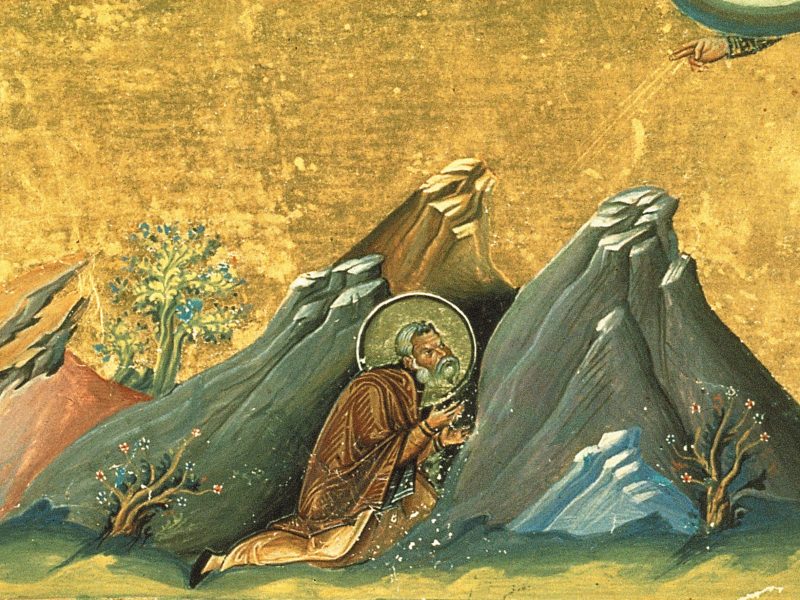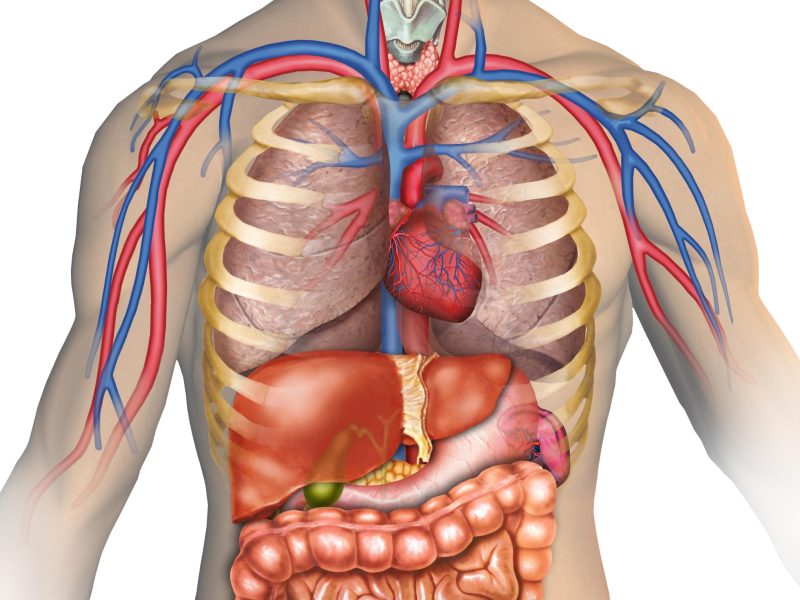by Gideon Lazar
In his encyclical, Laudato Si’, Pope Francis lays out a devastating critique of the excesses of modern society and the effects of this on the environment. While the encyclical has often been considered as an element of the wider secular environmentalist movement, this is the wrong setting for it. Rather, the encyclical is grounded within the Catholic theologies of creation and of politics. If taken seriously, the encyclical can be taken as a deathblow to the contemporary scientific understanding of the cosmos and to the politics of secular liberalism.
In chapter two of Laudato Si’, the Holy Father lays out the theology of creation. The section begins by explaining how God created man with three different relations: “with God, with our neighbour and with the earth itself” (66). We see this in Genesis 2. God speaks to man, man speaks to woman, and man speaks to the animals. However, we also see that these three relationships are not equal. There is a Dionysian hierarchy of goods, with God as the highest good, and then going down through the angels, man, and all of creation. Francis stresses this hierarchy of goods in many places. For example, he calls on us “to praise God the Creator” (72) and complains of those who “combat trafficking in endangered species while remaining completely indifferent to human trafficking, unconcerned about the poor, or undertaking to destroy another human being deemed unwanted” (91).
This is not to say that care for creation is unimportant. After all, this is exactly what the encyclical is about. Francis refers to creation as a “common good” as it is something we can all share in (23). Likewise, Francis draws on the concept of exitus and reditus when he argues that just as God created all things, these creatures “give glory to God by their very existence” and “convey their message to us” (33). God’s ad extra work goes down through the great chain of being which then returns that gift of love back through the chain to God. In terms of our relations with animals, this means we have a duty to care for them and in return they serve us in a variety of ways.
Francis points out how “these three vital relationships have been broken, both outwardly and within us. This rupture is sin. The harmony between the Creator, humanity and creation as a whole was disrupted” (66). Man is in the middle of the great chain of being, and so God set up man as a priest in the garden to mediate His life to the creation. Sin destroys this connection. Sin not only destroys relations between men and between man and God, but also between man and creation because it ruptures this chain of being. For example, when Cain kills Abel, God tells Cain that “the voice of your brother’s blood is crying to me from the ground. And now you are cursed from the ground, which has opened its mouth to receive your brother’s blood from your hand. When you till the ground, it shall no longer yield to you its strength” (Gen 4:10-12, cf. LS 70). The effects of Cain’s sin seep down into the very fabric of creation and this has a very real effect on Cain’s agricultural production. Sin continues on the Earth regardless though, and eventually the world becomes so filled with violence that “all the fountains of the great deep burst forth and the windows of the heavens were opened” (Gen 7:11, c.f. LS 70). The Earth itself comes forth to prosecute the violence against it.
All of this may sound like nice allegories to learn about the relationship between man and creation. However, the Holy Father is clear that “the creation accounts in the book of Genesis contain… historical reality” (66). He does clarify that it is in “symbolic language.” After all, there are not really windows in the sky or fountains under the ground. Rather this is phenomenological language. Noah would have seen water falling from the sky and water bursting forth from the seas as God prosecuted the crimes upon creation through the creation itself. However, these are real stories that really happened. To reduce them to allegory would be to turn Christianity into a Gnostic religion where the creation does not matter. Our sins and salvation history take place in this world, not some disembodied world of ideas. This is the very theme of Laudato Si’ after all. Thus, the stories told in Genesis must be real stories that actually happened or else the very message of the encyclical risks falling apart.
The Holy Father’s message also strikes a blow at the secular scientific account of the cosmos. According to this view it is not sin that damages creation. Sin, if it exists at all, is a matter for the disembodied world of philosophy and religion. It has no impact upon natural processes. What is damaging creation is specific technologies that are producing specific effects. This is partially correct. We are using certain technologies that are damaging the environment. However, these technologies are part of a wider sinful regime of technocracy, as Francis points out (101-136). It is the sinful system that is destroying the world. Environmentally destructive technology is merely the secondary cause by which technocracy destroys. In the time of Cain, his sin still had an effect on the environment. Indeed, it led to the mass and near mass extinctions of the flood. Thus, sin’s destruction of the cosmos is a perennial issue which has now simply taken a new form which Pope Francis thinks requires new tools to combat.
Going back even further than Cain, St. Paul says that “the creation was subjected to futility, not of its own will but by the will of him who subjected it in hope; because the creation itself will be set free from its bondage to decay and obtain the glorious liberty of the children of God” (Rom 8:20-21). Many of the Church Fathers believed that not even animals died before the fall. Adam’s sin introduced death and corruption not only into the human family, but into all creation. This again destroys the secular scientific account of the cosmos. There cannot be the billions of years of biological death necessary for Darwinism if animal death only began with Adam. Indeed, Pope Francis says at one point, “even if we postulate a process of evolution,” showing that evolution is only a postulate and not a proven fact (81). While a Catholic may be free to believe in Darwinism, it would not seem to fit with the theological argument that Laudato Si’ is making.
Since the cause of environmental destruction is twofold, both human sin and particular actions of technologies, a twofold solution is needed. To the problem of human sin, the Holy Father draws to mind the example of St. Francis (10-12). He says that “the harmony which Saint Francis of Assisi experienced with all creatures was seen as a healing of that rupture [of sin]” and that “through universal reconciliation with every creature, Saint Francis in some way returned to the state of original innocence” (66). Through the healing of sin, we can also heal the wounds in creation. This is a call to radical personal holiness. Just as St. Francis left the riches of his life to live a life of holy poverty, so we too are called to live a life of holy poverty and not follow the ways of the world. We cannot just pass off the responsibility to care for creation to someone else since we do not pollute as much as them. We must recognize that our sin is what is destroying creation, and so repentance, reconciliation, and a life of holiness are the responsibility of each and every one of us.
However, because the problem also regards the secondary causes by which our sin destroys the world, these must be dealt with as well. Since the climate is a common good, Pope Francis calls upon the institution which has care of the common good, the political community (163-198). This requires policies at the international, national, and local levels, in accordance with the principles of solidarity and subsidiarity.
Since sin is the root of the issue though, it would be a mistake to this that these political issues can be dealt with in a secular politics. Rather, we must return to the perennial teaching of the Church that “the State, constituted as it is, is clearly bound to act up to the manifold and weighty duties linking it to God, by the public profession of religion” (Leo XIII, Immortale Dei 6). It is only once the modern liberal state stops “presuming to take the place of God” that the environmental crisis can be fixed (LS 66). Pope Francis calls to mind a similar time to now when “the Roman Empire was seeking to impose absolute dominion” (74). Liberalism will always seek to dominate creation and the Church because it recognizes no higher authority than itself. While progress can be made under a bad regime, as long as we keep the same regime, we can never solve the problem.
If we wish then to take the message of Laudato Si’ seriously, we must call the liberal state to repentance for its sins: for denying the laborer his wage, for destroying the environment, for slaughtering the unborn, for destroying the family, and most of all for refusing to acknowledge the Creator and the true faith he established. Pope Francis wrote this encyclical to “all people” because all people, not just the faithful of the Church, are bound to listen to the Church when it speaks (3). The modern world must abandon its idolatry and submit to Christ and his Roman Pontiff.

